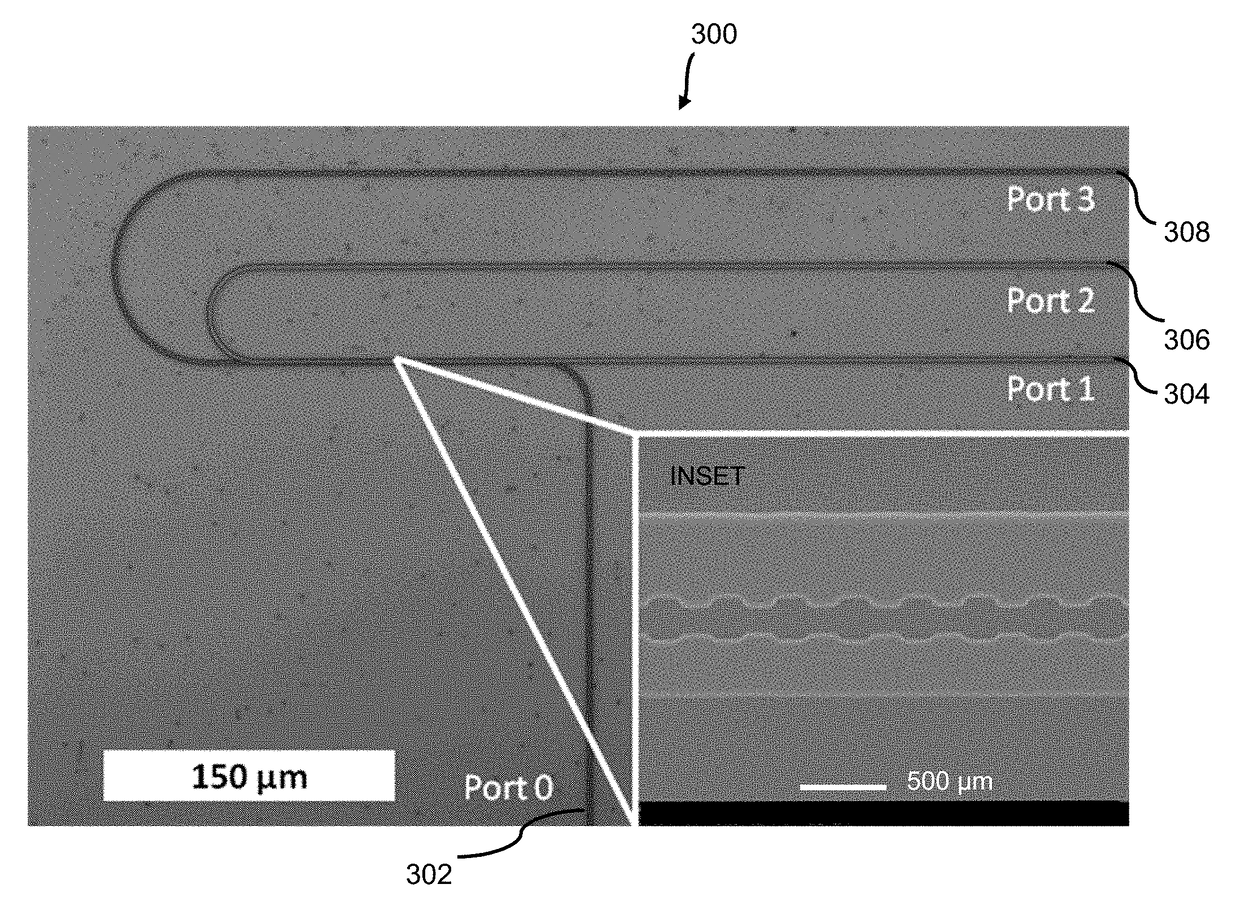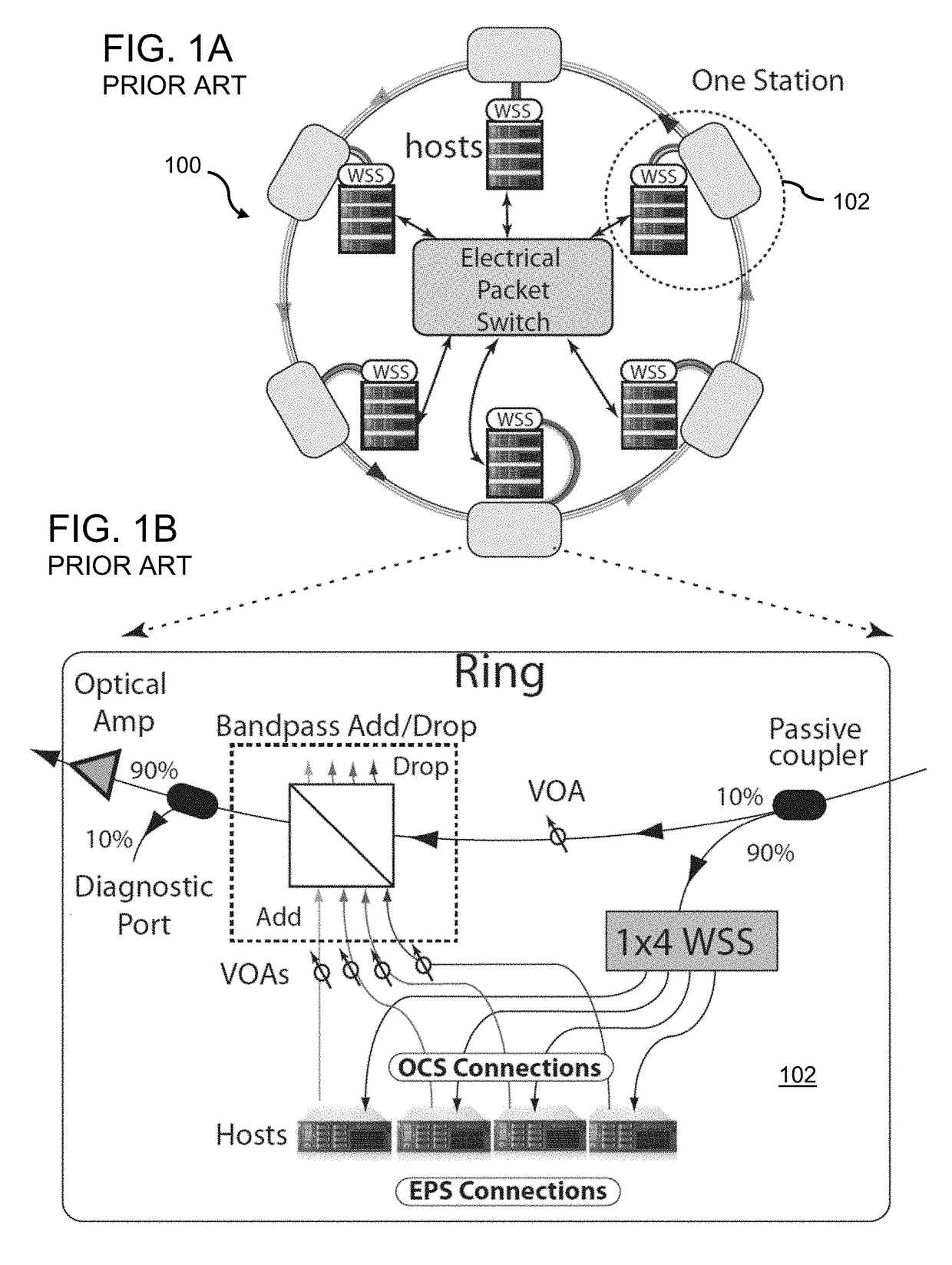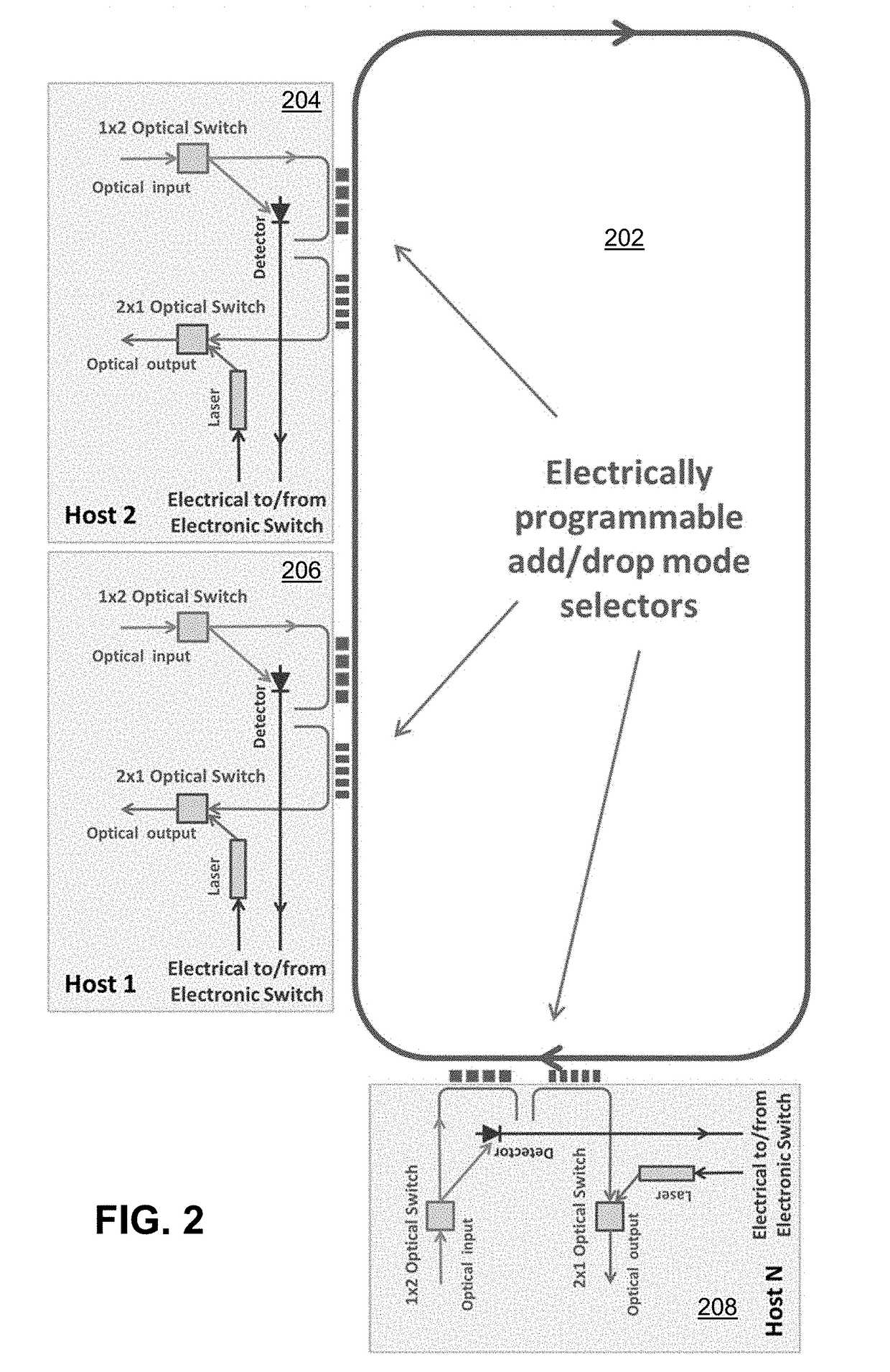Multi-mode waveguide using space-division multiplexing
- Summary
- Abstract
- Description
- Claims
- Application Information
AI Technical Summary
Benefits of technology
Problems solved by technology
Method used
Image
Examples
Embodiment Construction
[0031]FIG. 2 illustrates provides an example of a hybrid SDM photon chip architecture incorporating the inventive technology. The architecture follows the structure of a MORDIA datacenter such as described by Farrington, et al. in “A 10 μs Hybrid Optical-circuit / Electrical-Packet Network for Datacenters,”Proc. IEEE / OSA Fiber Commun. Conf., March 2013, Paper OW3H.3, and Farrington, et al., “Hunting Mice with Microsecond Circuit Switches,” in ACM HotNets, Redmond, Wash., 2012, each of which is incorporated herein by reference. The switch includes an electronic packet switch 202 with j hosts, “Host 1”204, “Host 2”206, and “Host N”208. In embodiments of the invention, a number of carrier signals are multiplexed into a waveguide by using the different guided modes of the waveguide. The coupling between arbitrary modes is accomplished by periodically structuring the waveguides. The effect of periodically structuring the waveguide may be described using the paradigm of the electromagnetic ...
PUM
 Login to View More
Login to View More Abstract
Description
Claims
Application Information
 Login to View More
Login to View More - R&D
- Intellectual Property
- Life Sciences
- Materials
- Tech Scout
- Unparalleled Data Quality
- Higher Quality Content
- 60% Fewer Hallucinations
Browse by: Latest US Patents, China's latest patents, Technical Efficacy Thesaurus, Application Domain, Technology Topic, Popular Technical Reports.
© 2025 PatSnap. All rights reserved.Legal|Privacy policy|Modern Slavery Act Transparency Statement|Sitemap|About US| Contact US: help@patsnap.com



